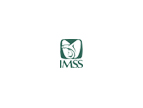
Hormone replacement therapy (HRT) is associated with an increased risk of thromboembolism dependent on the type of HRT; therefore, we compared therapy effects of intranasal with oral estrogens on coagulation and fibrinolysis markers in postmenopausal women.A randomized study in which 29 healthy hysterectomized women received intranasal 17beta-estradiol or oral estrogens for 3 months.There were no significant differences in the baseline characteristics between groups. Those women receiving intranasal estradiol showed a mild increment in plasminogen activator inhibitor-1 (PAI-I) (from 6.8 +/- 3.5 to 9.6 +/- 3.9 U/ml, p < 0.01); however, fibrinogen, factor VII-tissue factor complex (VIIa-rTF), antithrombin III (ATIII), protein C (PC) activity, protein S (PS) activity, plasminogen (PLG), and tissue-type plasminogen activator antigen (t-PA) were unchanged. In contrast, oral unopposed estrogens elevated t-PA (from 4.9 +/- 2.9 to 9.6 +/- 5.1 ng/ml, p < 0.01) in parallel with a decrement in PAI-I (from 5.2 +/- 4.0 to 2.7 +/- 1.7 U/ml, p < 0.05) and VIIa-rTF (from 201.2 +/- 181.0 to 140.6 +/- 108.7 mU/ml, p < 0.05). Fibrinogen, ATIII, PC, PS, and PLG were unchanged.Nasal 17beta-estradiol had no effect on the coagulation markers, except a moderate increment in PAI-1. In contrast, oral estrogens elicited a decrement in both VIIa-rTF and PAI-1; however, those changes did not surpass normal limits.Copyright 2005 S. Karger AG, Basel.








